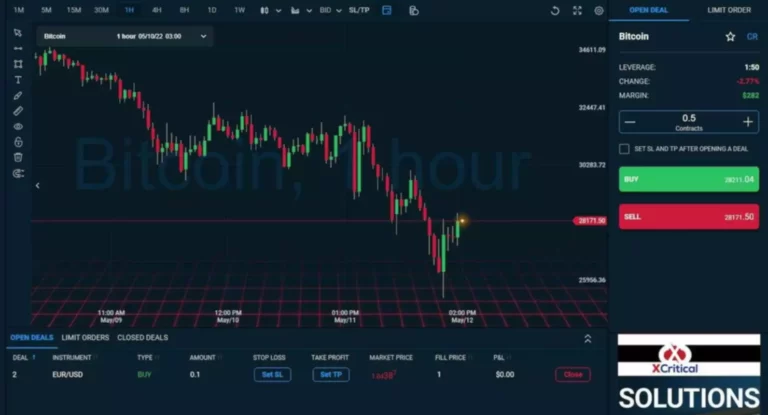Ethereum Staking Explained: Is ETH Staking Worth It?
M Rok is a popular Editor who has been writing online for over 10 years. He has a loyal following of readers who enjoy his...
M Rok is a popular Editor who has been writing online for over 10 years. He has a loyal following of readers who enjoy his...
Miners in a PoW network usually compete to solve mathematical problems, but an algorithm determines the winner in a proof of stake network based on the stake amount. Thankfully, Ethereum developers have been making moves to migrate to https://www.xcritical.in/ a pos consensus. The Ethereum proof of stake upgrade is tagged the “Merge” and is slated to occur in September 2022. The network is kept secure by the fact that you’d need 51% of the network’s computing power to defraud the chain.
This incentivizes validators to act in good faith to benefit the cryptocurrency and the network. Different proof-of-stake mechanisms may use various methods to reach a consensus. Ethereum and other smart-contract-enabled blockchains process a significant number of transactions when compared to non-smart-contract coins such as bitcoin. Ethereum currently processes over 1,000,000 transactions per day, which will increase to many times more than that once the ETH 2.0 upgrade is complete. Compared to approximately 200,000 transactions per day on Bitcoin, it’s easy to see why scaling problems needed to be solved. The evolution of Ethereum PoS will also be influenced by community governance.
This could lead to centralization instead of decentralization, as more tokens will be in the hands of validators. The participants are responsible for verifying transaction data are called Validators. But some participants can join a staking pool to lock lesser amounts. A few of the cryptocurrencies already using the proof of stake consensus mechanism include Cardano (ADA), Solana (SOL), Tron (TRX), EOS, Cosmos (ATOM), Tezos (XTC), and Terra. Miners compete to create new blocks filled with processed transactions.
Another significant role of the Beacon Chain is the randomization of validator selection. This randomization mitigates the risk of collusion or targeted attacks against the network, ensuring a fair and ethereum proof of stake model decentralized process. Validators are required to perform certain tasks to fulfill their role. These tasks include validating transactions, signing blocks, and participating in the consensus protocol.
Tokens, on the other hand, are outside of the family of proof-of-work and proof-of-stake cryptocurrencies. They are not a currency on their own, but rather a unit of measure that exists on top of an existing cryptocurrency’s framework. They are typically used to represent physical assets, such as real estate or collectibles, digital assets such as processing power or storage and decentralized finance (DeFi).
- While this makes records on the blockchain secure, it’s highly energy-intensive.
- Based on the proposal, the Proof of Work protocols will be transitioned into The Beacon Chain to become proof of stake.
- This innovative mechanism plays a crucial role in randomizing the selection process and mitigating the risk of collusion or targeted attacks.
- Of course, you can also use other ways of staking ETH that are also available to users that have less than 32 ETH to stake.
Also, it pays rewards in crypto, and its earning potential is high depending on the network. Validators will replace miners and will be required to lock 32 ETH on the Ethereum network to qualify. As for the impact on ETH price, the community is optimistic that a reduction in issuance of new ETH will affect prices as demand will exceed supply. Also, some industry observers believe that the migration will improve ETH price as it will provide greater liquidity on the network. Besides, it will support multiple NFTs, decentralized applications, and smart contracts, which will improve both Ethereum’s appeal and value in the long run.
However, the supply of new ETH tokens will reduce so much that demand might exceed supply, thereby pushing prices up. Serenity is the term that expresses phase 2 of the Proof of Stake upgrade. As a result, it will be possible to execute mainnet account balances and other transactions.
Overall, staking provides an opportunity to earn ETH by actively participating in the Ethereum PoS network. By staking your ETH and becoming a validator, you contribute to the security and efficiency of the blockchain while potentially earning additional rewards. As Ethereum continues to evolve, staking is set to play a vital role in the network’s growth, sustainability, and success. This innovative mechanism plays a crucial role in randomizing the selection process and mitigating the risk of collusion or targeted attacks.
The validation process will transition from proof of work to proof of stake. Miners will be replaced by validators who don’t need to compete with one another to solve complex mathematical problems. The validators will hold the majority of ETH coins, and there will be a different way of distributing new tokens.
It is responsible for participating in the consensus-building process of a Proof of Stake blockchain. Validator nodes vote on the authenticity of a new block of transactions, thus communally ensuring new blocks are valid before permanently adding them to the blockchain. Meanwhile, one specific node is selected as the “block proposer” for the current time slot. This node is responsible for building the new block of transactions and broadcasting it to the other nodes to be verified. When the network performs optimally and honestly, there is only ever one new block at the head of the chain, and all validators attest to it. However, it is possible for validators to have different views of the head of the chain due to network latency or because a block proposer has equivocated.
Market participants, often called validators, are required to “stake” (contribute) a certain number of coins to be able to help validate transactions. (This is essentially serving the same function as miners.) Each qualifying validator has the ability to earn a reward. One of the primary concerns is the potential for centralization in PoS.
As the popularity of decentralized applications (dApps) and smart contracts grows, there is a need for increased transaction throughput and quicker block validation times. The implementation of shard chains is a potential solution to scale Ethereum PoS effectively. Ethereum Proof of Stake (PoS) is a consensus algorithm used by the Ethereum blockchain to validate and secure transactions. The proof of stake is a transaction verification mechanism on a crypto network. The consensus mechanism ensures that data on a cryptocurrency network is valid.
Cryptocurrencies are decentralized, meaning they don’t have the control of a financial institution to verify transactions. This is why many cryptos either use proof-of-stake or proof-of-work to validate crypto transactions. Both are essentially different algorithms that allow users to add transactions and record them on a blockchain, an immutable public ledger. Ethereum now uses a Proof-of-Stake consensus mechanism, in which validators stake ETH in exchange for participating in the consensus process. Validators are rewarded for adding new blocks to the Ethereum blockchain and for checking that blocks proposed by other validators follow the protocol’s rules. Under Ethereum’s PoS, if a 51% attack occurred, the honest validators in the network could vote to disregard the altered blockchain and burn the offender(s) staked ETH.

M Rok is a popular Editor who has been writing online for over 10 years. He has a loyal following of readers who enjoy his distinctive style of Researching. M Rok covers a wide range of topics on his blog, from personal finance to general. He has a knack for writing engaging and thought-provoking posts that get his readers thinking. M Rok is also a talented photographer, and his blog features some of his stunning photos. If you're looking for an interesting read, check out M Rok's blog!



